8 Fabric Painting Techniques On Clothes With Steps
Jump To:
One of the factors that we notice at our first glance at a piece of clothing is its patterns. Fabric painting is the aspect that gives clothing a character and makes it unique from others and fabric painting techniques on clothes to achieve the uniqueness. Many people do fabric painting as a hobby and consider fabric one of the best canvases for showcasing their creativity. Then you’ll definitely need some fabric painting tips and tricks.
The roots of fabric painting techniques began in Asia and dated back to about 3000 B.C. However, fabric painting is now mostly industrialized, but several artisans and professionals still try to preserve the hand-made method.
This article has discussed some of the most popular fabric painting techniques that anyone can try at home. We have also included instructions to execute each type of fabric painting technique for the ease of readers.
1. Batik Fabric Painting Technique
Batik Print is prevalent in India, and it is one of those fabric painting techniques that require a lot of preparation and supervision. Mainly one has to use paint and wax to do batik fabric painting. The process for creating batik print on the fabric is:
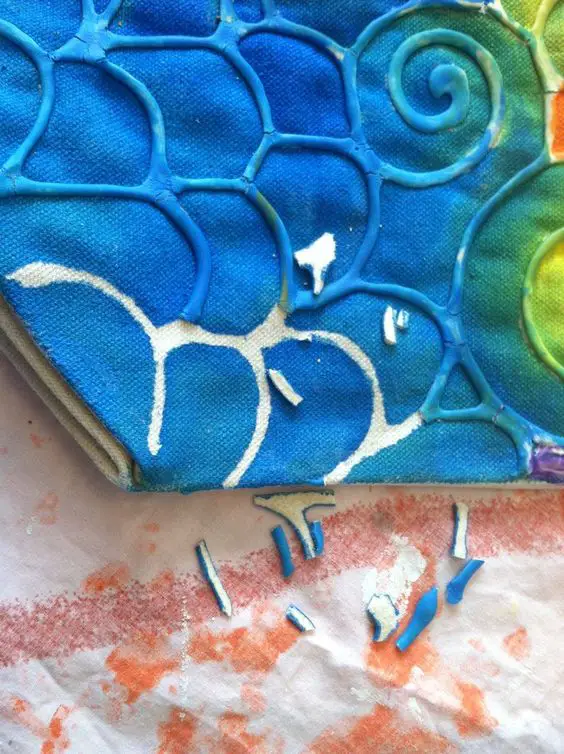
- Gather all the materials required like a pencil, muslin cloth, scissors, newspaper, plastic sheet or tarp, fabric dyes, water, melted beeswax or batik wax, etc.
- Create a layout of your design on the fabric.
- Apply the first layer of wax using a brush on the areas you want white in the end.
- Apply the second layer of wax on the other side once the first layer dries.
- Crack the wax in some areas where you want to create the crackle effect.
- Apply dye all over the fabric and let it dry.
- Remove the wax by ironing the fabric after keeping it in between newspapers.
- Once all the melted wax transfers to the newspaper, enjoy the finished product.
2. Block Fabric Painting Technique
One of the oldest techniques of fabric painting is the block painting. Earlier people used vegetables to create stamps with desired patterns for block fabric painting techniques. Earlier, people commonly used cotton fabric for block print, but now people use other fabrics too. However, it is best to avoid fuzzy woolen fabrics because the pattern gets distorted due to dye spreading. The steps for block printing on fabric are:
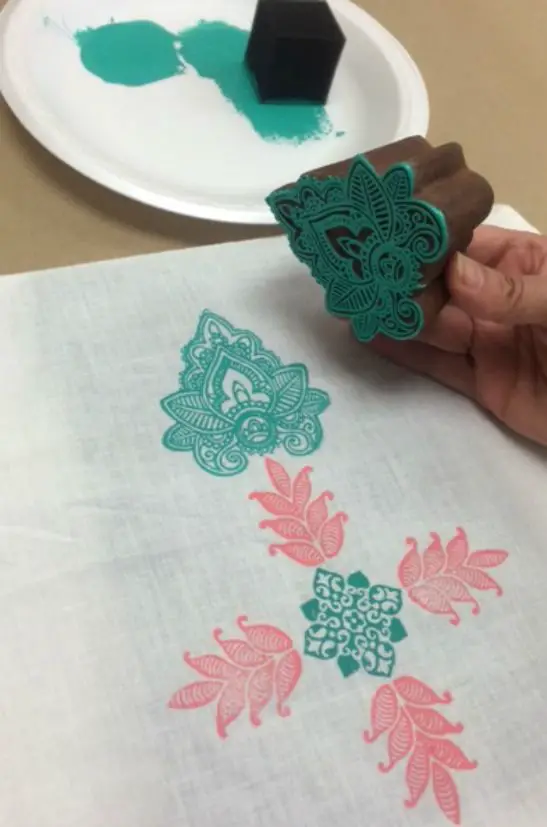
- Keep your stamps clean and ready, along with your paint.
- Prepare the fabric by washing and ironing.
- Stretch and fix the fabric, for it is essential to get rid of all wrinkles.
- Dip the stamp in the paint.
- After that, press the stamp on the fabric in the desired area and leave it for 2-3 seconds.
- Then keep repeating the last two steps until the entire fabric is more or less covered.
- Let the paint dry, and your fabric will be ready to use.
3. Dot Painting Technique
The dot fabric painting is one of the easiest techniques and ideal for beginners. This fabric painting technique requires very few tools, but the results can be very vibrant if done creatively.
One can use several types of dot painting types, like cotton, poly blend, denim, rayon, terry cot, canvas, silk, flannel, etc.
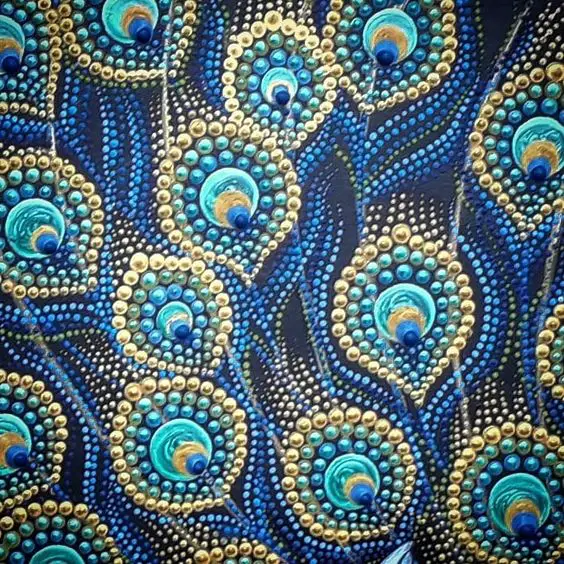
The steps for doing dot fabric painting are:
- Keep your materials ready, like paint, cheap earbuds, a pencil, and a thin stick.
- Before painting, prepare your fabric by washing and ironing.
- Either you can come up with your design or search on the internet for dot fabric painting ideas for some inspiration.
- Dip one end of an earbud into paint and press on the desired area (on the fabric) and repeat until your design is complete.
- Let it dry before showing it to others.
4. Finger Painting Technique
The finger fabric painting is one of the most liberating fabric painting techniques because you get to create beautiful art by just using your fingers.
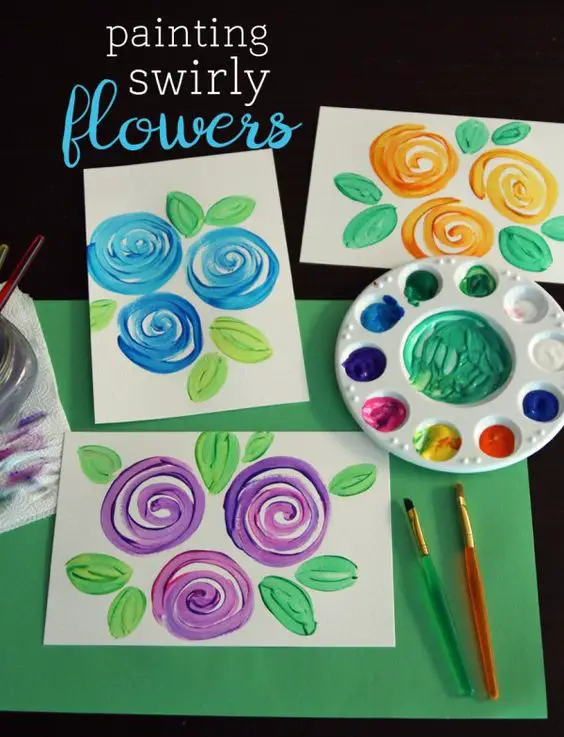
The finger fabric painting is a simple technique and requires significantly fewer tools or materials. To make finger fabric painting, all one has to do is:
- Sketch out a simple design of your choice on the fabric using a pencil.
- Dip your finger in paint and start painting on the fabric using just your finger.
- Have a blast like kids do to create this artwork.
- After finishing the painting, let it dry, and once it gets dry, enjoy the finished product.
5. Freehand Fabric Painting Technique
The freehand fabric painting technique is ideal for confidence about their painting skills but wishes to experiment with their art on fabric. There are many fabric options available that anyone can choose for doing freehand painting, like cotton, denim, canvas, silk, linen, etc. The steps for doing freehand fabric painting are:
- Choose your tools (brushes, paints, etc.) right.
- Prepare your fabric before painting by washing and ironing, if possible.
- Sketch out the design you wish to make (some flowers and vines are great prompts for freehand fabric painting).
- Be confident about your design and your skill, and proceed with a steady hand.
- Take liberal amounts of the paint you are using on the brush and carefully color your design.
- Shading gives excellent results; therefore, blend those darker shades outside of the background with the lighter ones in front.
- Let the paint dry and then flaunt your art.
6. Outliner Fabric Painting Technique
The Outliner Fabric Painting is a technique in which one has only to do the entire design outline using paint and a very thin brush. You can use almost all types of fabrics for the outliner fabric painting technique. The steps involved in doing outliner fabric painting are:
- Other than paint, choose the right brush to create neat lines like the 00 brush.
- Madhubani designs or mandala art styles are ideal for this kind of fabric painting.
- You can choose two or more paints to create a 3D effect.
- Once you are satisfied with the finished design, let it dry, and then the fabric will be ready to use.
7. Spray Fabric Painting Technique
The process of spray fabric painting is very similar to that of spray paint on paper. You can paint almost any type of fabric using this technique.
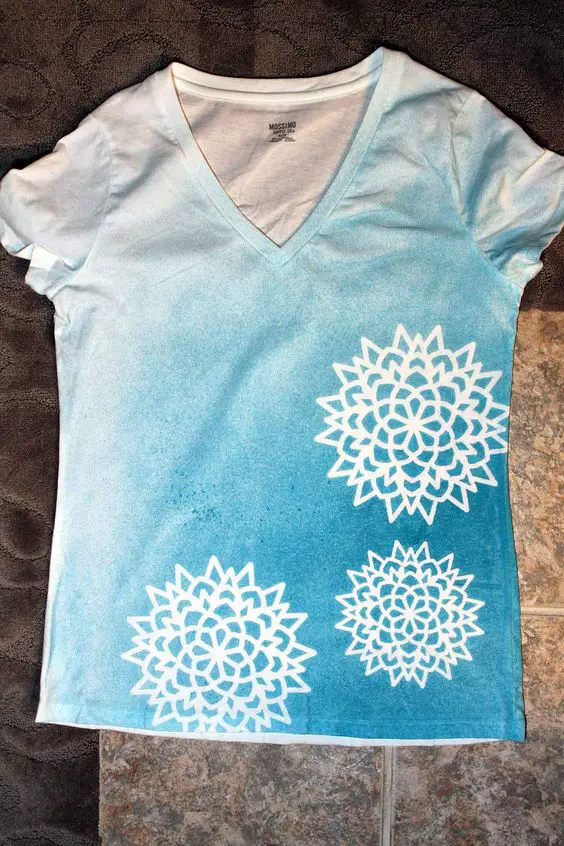
The steps in the spray fabric painting technique are:
- Fill a sprayer bottle of the desired size with color (or water mixed with dye).
- Test the sprayer on a rough fabric or paper.
- Cut out a random design or use a stencil and set it on your desired area on the fabric.
- Spray the paint on the fabric and let it dry.
- Remove the cutout or the stencil, and the design will reveal.
8. Wet-On-Wet Fabric Painting Technique
The wet-on-wet fabric painting technique is very similar to doing watercolor on paper.
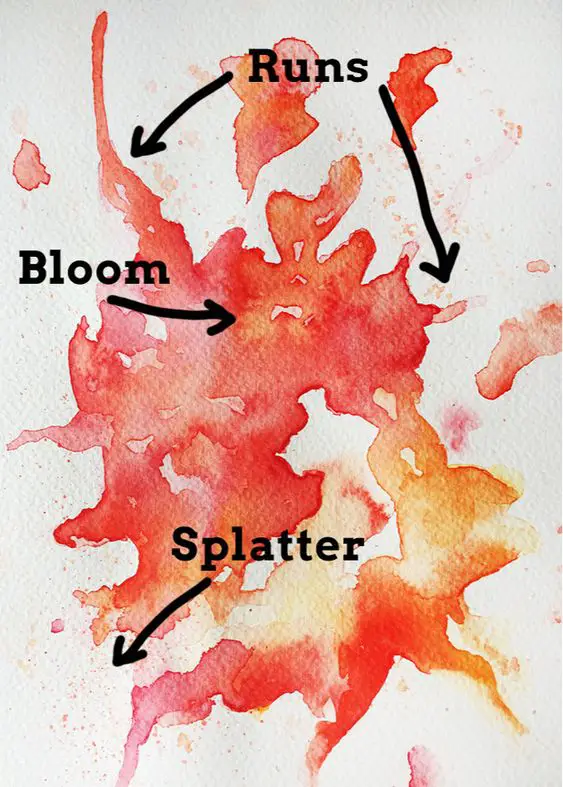
The steps for creating the wet-on-wet fabric painting effect are:
- Decide your design, and you might also outline it with a pencil.
- Wet the fabric strategically. Don’t wet the fabric too much near the outline so that the fabric does not spread outside.
- In this technique, you have to take very little paint on a wet brush and then apply it to a wet fabric piece.
- Use a liberal amount of water while fabric painting to notice the color blended across the fabric.
- Let the fabric and the paint dry, and then it will be ready to be worn.
Final Note
Now that you are aware of most of the top fabric painting techniques, you can get started on your chosen technique. We hope that this article guides and inspires you to create magnificent fabric art.
How do you start painting on fabric?
Here are the steps:
- Prepare the fabric. The area to be painted should be kept stretched either by taping it or by using an embroidery ring.
- Choose the design and transfer it to the fabric to be painted.
- Fill in the colors.
- Let it dry.
- The colors become wash proof after seven days.
How can I permanently paint fabric?
Paint on fabric permanently by mixing a fabric medium with acrylic paint. Acrylic paint is fast drying and waterproof but can crack or peel if used on its own. Adding a fabric medium gives the paint flexibility to move with the garment, thus ensuring a permanent finish.
What kind of paint do you use on fabric?
acrylic paint The easiest and most versatile to paint on fabric permanently is by adding a fabric medium to any color of acrylic paint. There is a big advantage to using acrylic paint to make permanent fabric. Because you are using acrylic paint, there are countless colors of DIY fabric paint to choose from.
How do you paint fabric without bleeding?
How to Prevent Bleeding in Fabric Painting
- Lay the fabric on a completely flat surface.
- Paint on dry fabric only.
- Iron the paints for a few minutes to set the image you have created.
- Blow dry the finished image with the dryer set on low if ironing is not an option.
What’s the difference between fabric paint and acrylic paint?
The biggest difference between normal fabric paint and acrylic paint is that acrylic paint is much thicker, which can cause flaking of the paint and an uncomfortable stiffness to the fabric. The easiest way to make a fabric paint from a basic acrylic paint is to thin it using an acrylic medium.
Does acrylic paint stay on fabric?
You can use acrylic paint on fabric. It will stay on clothing permanently. However, acrylic does not last for long on the material by itself. You must prepare the fabric using a medium and seal the paint with a process called heat-setting for optimal results.
Does acrylic stick to fabric?
Acrylic paint does work on fabric but it is not the best paint for that particular job. While acrylic paint will stick to fabric initially it will crack and crumble after a while. So acrylic paint is not a permanent solution for painting fabric. Instead, regular Fabric paint should be used.
What is fabric sealer?
Fabric Protector Sealant is an advanced blend of reactive polymers and resins that form a tough bond when applied to fabrics. BioTech Fabric Protector Sealant seals upholstery and fabric, helping to prevent oil and water based liquids from entering the fibers so that spills can easily be blotted up.
How do you hand paint fabric?
Which Colour is best for fabric painting?
Just browse our roundup below.
- Arteza Permanent Fabric Paint. Arteza’s permanent fabric paint is perfect for use on T-shirts, jeans, bags, shoes, and canvases.
- Castle Art Supplies 3D Fabric Paint Set.
- Tulip Soft Fabric Paint Kit.
- Mont Marte Permanent Fabric Paints.
- Jacquard Fabric Paints.
How do you set the color in fabric?
Thoroughly clean a large mixing bowl or cleaning bucket, and then fill it with one gallon of fresh, clean water. Add one-fourth cup table salt and one cup vinegar. The vinegar and salt work together to naturally lock the color into the fabric.
How do you keep paint from spreading on fabric?
rayat. 16 A simple layer of cardboard can prevent paint from bleeding through onto other fabric layers. All types of fabric paint have the potential to bleed in between layers. Use a barrier (such as a piece of cardboard) for multi-layered items, particularly items with a front and back like t-shirts and pillow cases.
Can you dilute fabric paint with water?
You can also add a little water to retail fabric paint, but take care not to dilute the paint too much. If you add too much water, the paint will definitely bleed (even on poly fabrics).
How do you set acrylic paint on fabric?
Wash and dry your fabric prior to painting if possible, then paint away. After the paint is completely dry (at least 24 hours), you need to heat set it for permanency and washability. Most fabrics can be heat set using an iron on medium or high heat for 3-5 minutes.